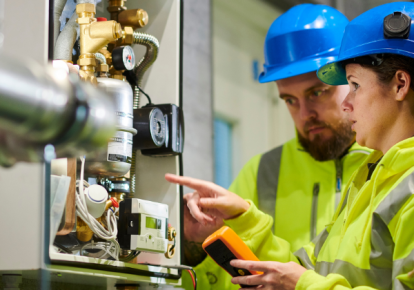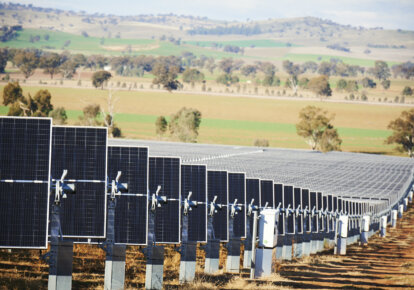There is a good chance that you or your business wants to reduce its carbon footprint. Greenhouse gas emissions, particularly along the value chain, can be a business’ largest impact on the environment.
In this post, we’ll be looking at emissions and how they can be reduced.
Measuring emissions
Before we look at how your business can tackle its emissions, it’s important to know how emissions are measured, managed and reported on.
There are three “scopes” of emissions. These scopes are used to group where the emissions occur relative business measuring them. The three scopes are:
- Scope 1: all direct emissions because of an activity from an organisation or business at a facility level. This includes fuel combustion on site such as gas boilers, company vehicles and “fugitive” emissions such as air conditioning leaks.
- Scope 2: emissions from indirect consumption of energy sources. This primarily relates to emissions that occur during the production of electricity consumed by the business. These emissions physically where electricity is generated. To determine the emissions associated with electricity taken from the grid, an average level of emissions is used based on all of the different types of generation exporting electricity into the grid.
- Scope 3: all other indirect emissions that occur in the wider economy. This includes transportation of purchased materials, goods and services, employee commuting, business travel, waste disposal, distribution, investments, and leased assets.
The first step for measuring emissions is determining which sources of emissions fall within the scope of the emission footprint of a business. For example, some scope 3 emission sources may be considered immaterial and therefore not included.
The second step is to determine the size of the carbon footprint by accounting for the activities a business has undertaken, usually over the course of a calendar or financial year.
Reducing emissions
Reducing emissions means tackling the sources of emissions in the three different scopes. Some options for reducing emissions include:
- Scope 1 emissions: Electrifying processes such as heating and company transport, reducing the amount of gas and other combustibles used on site and choosing more environmentally friendly materials in your production cycles, are steps toward offsetting Scope 1 emissions. These are all activities that can be taken on at your own sites.
- Scope 2 emissions: To reduce Scope 2 emissions, businesses can work with energy retailers to offset their electricity use with the purchase and surrender of Renewable Energy Certificates. The reduction of emissions can also be aided by combining your electricity supply with on-site renewable energy generation or by sourcing your electricity through a virtual off-site Power Purchase Agreement.
In addition, adjusting consumption or upgrading of equipment to more energy efficient alternatives reduces Scope 2 emissions. Using tools such as timers and sensors can help to ensure unused equipment is switched off when not in use. Coupled with Flow Power’s engineering services and demand management capabilities, companies can make changes that can significantly reduce emissions.
- Scope 3 emissions: While challenging to track and control, Scope 3 emissions are becoming increasingly important. Larger companies are now closely examining their whole supply chains to report on and reduce their scope 3 emissions. This can be achieved through actions such as reducing shipping distances and weight, or purchasing recycled materials, and looking for suppliers who can demonstrate low scope 1 and 2 emissions of their own.
Your business can support a net-zero carbon future
Businesses that can act on their emissions play a crucial role in driving forward a net-zero carbon future. This is especially true for businesses that go 100% renewable, as they have a direct impact on pushing forward Australia’s pipeline of renewable energy projects.
Questions about reducing your business’ emissions?
Talk to the friendly Flow Power team today.
Our energy specialists are ready to help optimise your energy and become the most carbon and price efficient possible.















